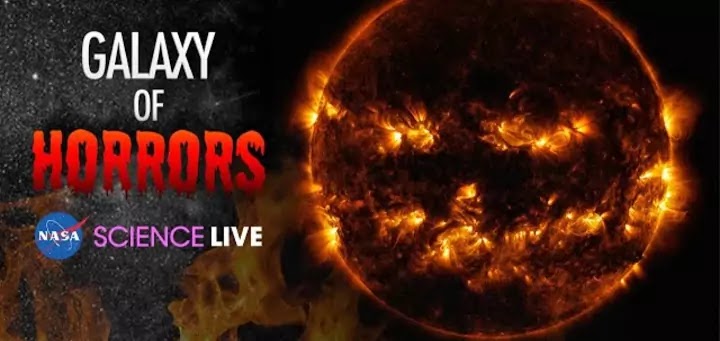
Galaxy of Horrors

Galaxy of Horrors
Hello and welcome to NASA Science Live.
The scenes and get to know your space agency. I'm your host, Yogesh Bhamare.
Take you on a journ to the darkest corners. Where invisible forces draw galaxy's together as dark energy rips them apart.
Travel the worlds with unmachining able itions, Pairless to humans.
First, we'll start at the far reaches of the milky way and exe terrifying planets that orbit other stars.
Then, we'll come a bit closer to come by exploring some of the who are eerie environments.
Have you ever heard radio waves from saturn?
You will today. Then we'll dive into the dark forces a in our universe, dark energy and dark matter.
Come at us now if you dare and discover the galaxy of horrors. Feel the of terror, the killers you never see coming.
With winds of up to 5400 miles per hour and rains of glass blowing sideways.
This hazy blow torched atmosphere is rid told with particles making this an unearthy death trap no one would want to face.
Discover the zombie world that exists in this host part of the galaxy poleter geist planet.
Despite its demise this undead star spins twin beams of radiatat could incinerate a space shift foolish enough to venture too close.
Even if you could make it to the surface, your nightmares would continue as the radiation from the zombie star rains down on planet.
Poltergeist as well as they are neighboring dead world creating sickly awards to light up your certain death.
These are the sample of the unwelcoming worlds that inhabit our worlds galaxy of horrors. that was terrifying.
We are going to introduce you to the plagued minds behind these chilling works of dark art.
Let's head over to our friends on the west coast at the jet propulsion laboratory.
This planet is called hd 189773b. It's called a hot jupiter. It orbits closer to the star.
It's 10 times close than it is 0 on the sun.
It's super, super Hot enough that the rocks, we find on earth are hot enough to be vaper rised and raining out in the atmosphere.
Because it experiences very high winds we expect this rain, these rains of glass because they're sill cat particles.
We expect those particles to be driven side waeupbz from the.
Our santa ana winds have nothing on this planet. Let's talk about our next poster which is zombie world.
Can you tell us about these planet ands make what them so this is system for halloween because of the names of the plannests and the star are actually undead creatures.
So the star is called leech and trailer you saw the planets are called poltergeist and drag tkpwar and I'm for getting the third one.
All of those are undead creatures already. climbed for a halloween poster. They're orbiting a pulse dead star that is rotating.
Rotating every 6 millie seconds and small and hot and giving o all these radio emissions.Very inhospitable to life.
It was a pleasure working with you. Really enjoyed it amazing to see how important it is and explainingt science that can't always be explained very easily.
Can you tell us how has fun resources like these planet posters helped you explain science to the public?
Personally I'm passionate about both art and science.
so it's an I love -what I love about these posters they're engaging not only to the general public but also astronomers.
Sign its it across the board even people well into exoplanet planet science.
It's not nice not only to point out the posters the artistic elements you but the science elements incorporated are like little easter eggs for people to find.
The size of the planets, is the particles in the sky, all of those things we can draw from.
Explaining not only the arts but also the science that goes into these particular systems.
We are going to take an ask nasa question.
Zack powers here asks, "Say a person o another planet far, far away from another galaxy, clear picture of earth.
What time period whe picture of earth be in ?
Light takes time to travel to us, so in fact we're peering back in time.
When we're receiving time from an existing exoplanet planet system depending on where that other disencounter system was looking at us they could be peering into different time periods.
Some glacial age or present day when the earth is really hospital.









No comments:
if you have any doubt, let me know